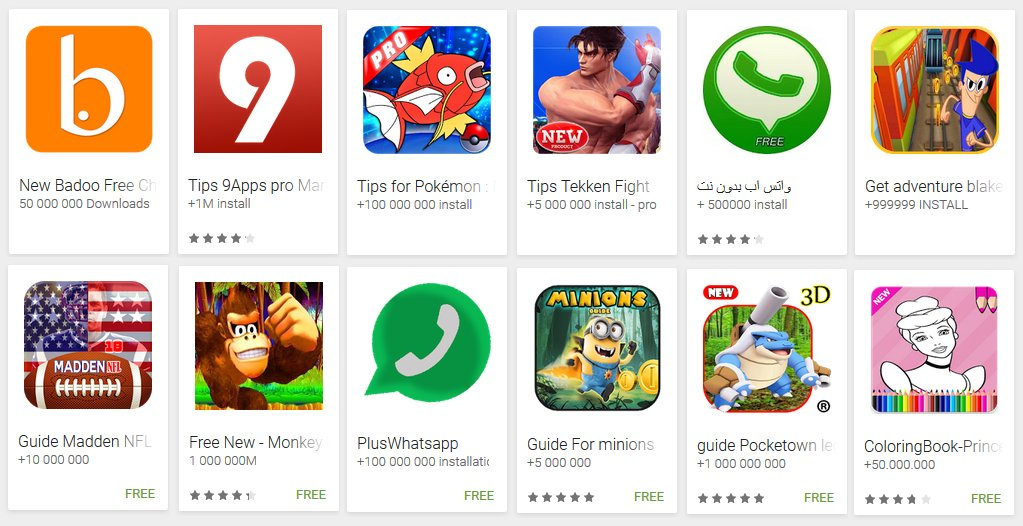The Fundamentals of App Store Optimisation & the Black Hat Tactics to Avoid
by Lindsay Rowntree on 23rd Jul 2018 in News
What is App Store Optimisation (ASO) and are mobile gaming developers making the most of it to maximise app-store visibility and potential installs? TheGamingEconomy speaks exclusively with Katerina Zolotareva (pictured below), marketing and customer success manager, TheTool, about how to get started and the common mistakes to avoid.
TheGamingEconomy: What are the basics for an app marketer/developer to get started with App Store Optimisation (ASO)?
Katerina Zolotareva: By definition, App Store Optimisation is a process of maximising the visibility, and conversion rate to install, of mobile apps and games with a goal of driving more downloads. We can divide ASO efforts into three key elements:
- Keyword research and search visibility optimisation
- Maximising conversion rate and A/B testing
- Tracking and improving the results, plus localising the app
Contrary to the common view, ASO is not only about search. There are two main sources of app discovery in the stores: 'search' and 'browse' (top charts, featured, and related/suggested apps). There are also differences that need to be considered when optimising for the App Store versus Google Play. Optimising the visibility of apps in Search and in Browse are two different strategies, affected by different ASO factors:
Search involves keyword research followed by optimisation of on-metadata factors, such as app name, title, URL, package (Google Play), subtitle, and keywords field (App Store), short and long description (Google Play), and developer name. On-metadata factors fall under the direct control of app or game developers and can be changed in their developer consoles, iTunes Connect, and Google Play Console.
Browse, on the other hand, is more affected by off-metadata factors, such as volume and velocity of installs, user feedback (ratings and reviews), and engagement. These factors can’t be directly controlled by developers, but can be influenced and optimised accordingly.
Conversion Rate Optimisation (CRO) is another important pillar of ASO. Conversion rate to install is key to making the most of incoming traffic to the product page and helps take advantage of both organic and non-organic traffic. Conversion needs to be optimised constantly in order to reduce eCPI (effective costs per install) and get more downloads from the same amount of traffic.

Katerina Zolotareva, Marketing Customer Success Manager, TheTool
Conversion rate is affected by both on- and off-metadata factors: app name, description, graphic elements (icon, screenshots, video previews), user ratings and reviews, and as well installs volume (in case of Google Play Store).
Besides the conversion rate to install (CVR), the tap-through rate (TTR) needs to be optimised as well, to make sure your app looks attractive and drives users from the search results page. TTR is mainly affected by app name and icon, so A/B testing these elements is essential to ensure both high TTR and high CVR.
A big part of ASO is testing and constant improvement of KPIs. ASO is never a one-time action, it is a dynamic process of constant tracking, testing, and tweaking the elements, always driving for maximum visibility and conversion in an ever-changing and competitive app-store environment.
It is important to highlight that ASO is never a standalone action, but a base for the whole app marketing strategy. In order to really benefit from ASO, it should be done at the same time with continuous improvements in product, user acquisition efforts, and maximising engagement and retention.
The two major app marketplaces (App Store and Google Play) have different requirements. Why is it important to have different strategies for each marketplace?
App Store and Google Play are quite different, both in terms of ranking algorithms and in the behaviour of users who are browsing the stores. Therefore, both search and conversion rate optimisation strategies should be different.
In terms of search rankings, Google will index all of the content on the store listing, while Apple will just take into account certain elements. Google Play takes into account all the keywords included in the title, short and long description, developer name, URL, and even the keywords from the user reviews. The density of keywords matters a lot for optimising for Google Play search algorithms, so make sure you are using all the available space in the text fields to include all possible keywords and keyword combinations (aim for at least 150-200 keywords per language).
Apple’s ranking algorithms work differently and only take into account the keywords included in app name, subtitle, keywords field, and the exact match keywords in the full name of in-app purchases. The space for placing keywords for iOS apps is much more limited, so you shouldn’t repeat the keywords and try to make the most out of the space you have to include different keywords that can combine between themselves to create different combinations. Apple then will 'mix and match' keywords from different fields and rank your app for the possible combinations.
As for the conversion rate, the new look of the App Store gives a lot of prominence to user ratings and reviews, however Google Play is already following the same path. The role of video is now significantly more important on the App Store, with the possibility of adding three video previews that autoplay on mute in the search results (affecting TTR).
Google Play includes the range of the install volume of apps in the listing, that can also impact the conversion. However, the main difference between the App Store and Google Play is the possibility of A/B testing: Google allows you to carry out experiments directly with your app listing in the store, in order to find out which version of a certain element drives better results. On the other hand, the App Store doesn’t provide this opportunity, so you would need to A/B test using third-party tools.
What are some of the most common ASO mistakes made by app marketers/developers?
Not optimising constantly to improve metrics. Many still take ASO as a one-time job. Remember: ASO is a long-term process and there is always a room for optimisation.
Not localising your app. Mobile is global and you never know where the demand might come from! Start with making the app available worldwide and localising store listings for key countries. When you see the performance, you can take decision of localising full content.
Doing Black Hat ASO. App stores have advanced algorithms of detecting these type of strategies and penalising the developers.
Focusing on ASO without constant improvement of product. Having a unique and quality product is step one for its success. And ASO can help you detect flaws and possible improvements.
The gaming category is hugely competitive – how can gaming app marketers/developers use ASO to maximise their visibility?
It is widely perceived that over half of app installs come from app store search. However, for games, it can be exactly the other way round, with 'Browse' driving up to 60% of organic installs. Therefore, try to take advantage of these opportunities:
Win the Top Charts: Take into account the main factors for getting into the Top Charts: volume and velocity of installs, and leverage the power of user acquisition to improve your visibility. Work on improving user engagement, as it is said to have an impact on that, too.
Get featured: Nowadays both app stores are shifting to an editorial approach to featuring apps and games. Make sure you pitch early and work with the editors to ensure your product is unique and delivering an exceptional user experience. Don’t be too salesy; instead, collaborate with the editors to perfect your product. It shouldn’t come as a surprise – app stores feature the apps that make them money, but that’s a perk for the developer as well.
Another possible way is to go off the store and take advantage of SEO tactics for mobile games to improve their visibility in mobile web search results.
Are there any Black Hat ASO practices to avoid, which could get your marketplace ranking penalised?
Plenty! Fake installs, fake search installs, fake reviews, keyword stuffing, bot installs, bot trending searches, lifting brand names – you name it! One piece of advice – don’t do it, because you will get penalised (or even banned). Play fair.
A great example of a common black-hat tactic (see below) is developers tricking users into believing their apps have had millions of installs, when in fact, what you're seeing is the name of the developer.

Source: Twitter @LukasStefanko
App Store OptimisationApp Stores








Follow ExchangeWire